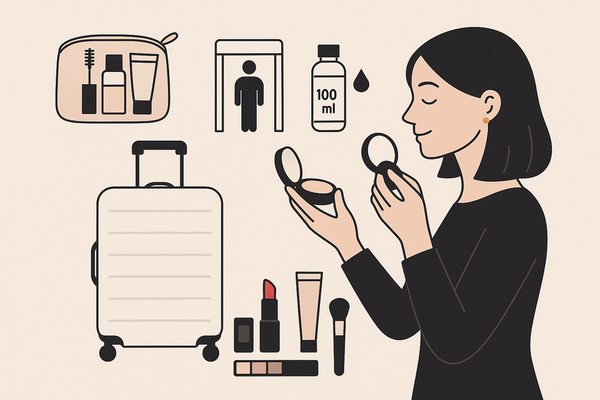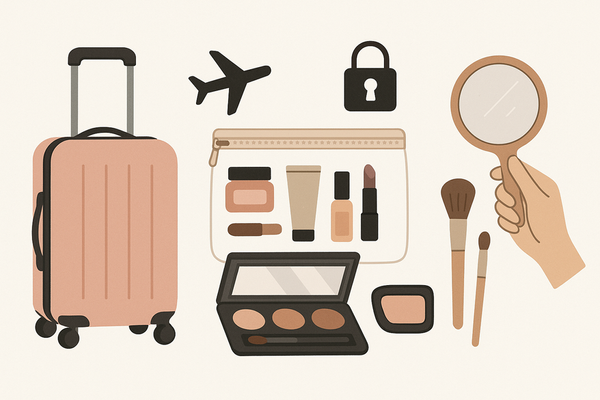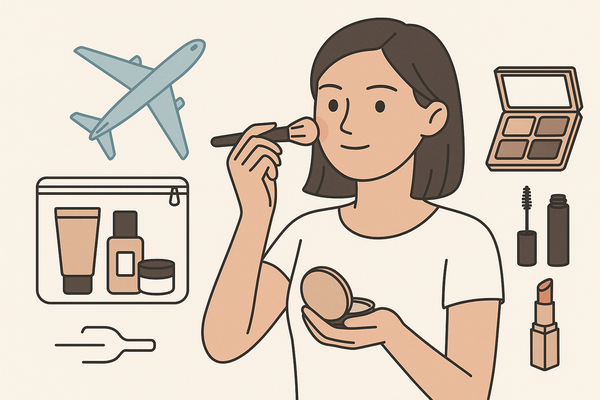Makeup Check AI Influencer Case Studies: Leveraging AI for Beauty Content Success
Explore how top beauty creators utilize Makeup Check AI influencer case studies to optimize content, boost engagement, and increase campaign ROI.

Estimated Reading Time: 8 minutes
Key Takeaways
- Makeup Check AI combines computer vision and machine learning to analyze and optimize makeup looks in real time.
- AI enhances influencer content through quality checks, personalized recommendations, virtual try‐ons, and trend analysis.
- Top creators use data‐driven reviews, real‐time optimization, and niche targeting to boost engagement by up to 25%.
- In‐depth case studies—from Lookfantastic’s campaign to Lil Miquela’s virtual presence—highlight scalable ROI gains.
- A clear 7‐step guide helps influencers integrate AI insights, track key metrics, and transparently disclose AI use.
Table of Contents
- What Is Makeup Check AI?
- The Role of AI in the Makeup Industry
- Influencer Strategies with Makeup Check AI
- In-Depth Case Studies
- Step-by-Step Guide for Influencers
- Future Trends and Considerations
- Conclusion
- FAQ
What Is Makeup Check AI?
Makeup Check AI is an advanced platform that uses computer vision and machine learning to analyze makeup looks in photos and videos. It helps influencers and brands spot color trends, verify application quality, and suggest products instantly.
- Computer Vision Analysis: Identifies 20+ makeup parameters such as foundation shade, contour angles, and eyeshadow intensity.
- Machine Learning Models: Trained on over 100,000 user-generated looks to learn emerging trends and common mismatches.
- Real-Time Feedback Loop: Processes live selfies or video frames with suggestions like “Try warmer blush” or “Blend contour here.”
Benefits: Faster trend spotting, automated quality control (95% accuracy), and personalized product suggestions (personalized makeup tips AI).
Source: Firework: Beauty Brands Using AI
The Role of AI in the Makeup Industry
Artificial intelligence is reshaping how beauty brands and influencers create, analyze, and optimize content. Here are four core functions of AI in makeup marketing:
- Quality Checks: Automated scanning ensures consistent application across images, reducing human error.
- Personalized Recommendations: Uses collaborative filtering to match products with skin tone and texture at scale.
- Virtual Try-On: Employs AR overlays tied to AI facial landmark detection for real-time product trials.
- Trend Analysis: Leverages NLP to mine social media captions and detect emerging palettes and style shifts.
Brand & User Benefits: Efficiency (real-time feedback), accuracy (data-backed plans), and scalability (global reach).
Sources:
Influencer Strategies with Makeup Check AI
Top beauty creators leverage AI to enhance accuracy, engagement, and ROI. Discover four key strategies:
- Enhancing Content Accuracy: Validate tutorial steps—blush placement, contour lines—and show before/after AI overlays.
- Data-Driven Reviews: Use AI scores for hydration, coverage, and longevity (e.g., “This foundation scored 4.8/5 for 12-hour wear”).
- Personalized Engagement: Segment followers by skin type and run mini-campaigns like “Dry skin demo” vs. “Oily skin tutorial.”
- Real-Time Optimization: Adjust captions, thumbnails, and hashtags on the fly; monitor engagement lift and click-through rates live.
Exact Metrics: Engagement lift up to 25%, click-through increases of 10–15%, and conversion boosts of 5–10%. Influencers often display dashboard insights to build brand trust.
Source: influencer makeup check AI
In-Depth Case Studies
Real-world examples show how influencers and brands achieve powerful ROI with AI-driven campaigns.
Example 1: Lookfantastic’s AI-Powered Campaign
- Strategy: AI-led influencer selection by demographic and psychographic fit.
- Execution: Unboxings, tutorials, product tests; real-time KPI tracking for mid-campaign tweaks.
- Outcomes: +40% engagement rate, +20% conversion, and 3× ROAS.
- Lesson: Align performance data with content for scalable campaigns.
Source: AI in Influencer Marketing
Example 2: Virtual Influencer Lil Miquela
- Strategy: AI-generated persona using deep learning for visuals and language.
- Execution: Pre-planned calendar with machine-learning comment moderation; style evolves by audience reaction.
- Outcomes: 3M+ engaged followers, consistent brand voice, cost-efficient content production.
- Lesson: Virtual influencers offer total brand control and 24/7 engagement.
Source: Firework: Beauty Brands Using AI
Example 3: Micro-Influencer Micro-Targeting
- Strategy: Niche creator segmented mature-skin and darker-tone communities with AI insights.
- Execution: Custom tutorials for fine lines and deep pigments; AI identified top posts per cohort.
- Outcomes: +50% engagement in targeted micro-communities and repeat collaboration offers.
- Lesson: Niche targeting can outperform broad campaigns.
Sources:
Step-by-Step Guide for Influencers
- Define Objectives: Set SMART goals like +15% watch time in 3 months.
- Select AI Platform: Checklist—media compatibility, UX, API integration.
- Onboard & Configure: Link TikTok/Instagram, calibrate skin settings, input brand guidelines.
- Monitor & Interpret Data: Read heatmaps, sentiment charts, and performance tables.
- Integrate Into Content: Update scripts, adjust demo angles, refine CTAs like “Try this shade if you have warm undertones.”
- A/B Test & Iterate: Test thumbnails, captions, and measure uplift with AI metrics.
- Disclose Transparently: Add “powered by AI insights” in descriptions to build trust.
To see how seamless it can be, try Makeup Check AI for intuitive, data-driven makeup insights.
Future Trends and Considerations
AI innovation continues to accelerate in makeup and influencer marketing. Key trends and considerations include:
- Next-gen Virtual Influencers: Deep personalization engines adapting in real time.
- AR-Powered Try-Ons: Live-stream overlays guided by AI face mapping.
- Responsible AI: Avoid biased skin-tone or age analysis; ensure data security.
- Inclusivity: Train models on diverse skin tones and ages to foster trust.
Predicted evolutions: hyper-personalized micro-communities and transparent AI dashboards that enhance follower trust.
Sources:
Conclusion
AI is revolutionizing makeup marketing and influencer content. From quality checks to trend analysis, makeup check AI influencer case studies reveal clear gains in engagement, accuracy, and ROI. Influencers can adopt data-driven reviews, real-time optimization, and niche targeting. Brands can learn from Lookfantastic’s AI campaigns and Lil Miquela’s virtual persona. Now it’s your turn: pilot Makeup Check AI, track your metrics, and share your success stories. Embrace AI to make your makeup content smarter, more personal, and more powerful.
FAQ
- What is Makeup Check AI?
- It’s a platform using computer vision and machine learning to analyze makeup looks, spot trends, and provide real-time application feedback.
- How can influencers benefit from AI-driven reviews?
- By showcasing AI scores for coverage, longevity, and hydration, influencers present clear, data-backed metrics that build credibility.
- What metrics should I track?
- Key metrics include engagement lift, click-through rate, and conversion rate—each can improve by 5–25% with AI insights.
- Are virtual influencers as effective as human creators?
- Yes. Virtual personas like Lil Miquela deliver consistent branding, cost-efficient production, and round-the-clock engagement.
- How do I disclose AI use to my followers?
- Include a note such as “Powered by AI insights” in your video description and briefly explain how AI shaped your content.




